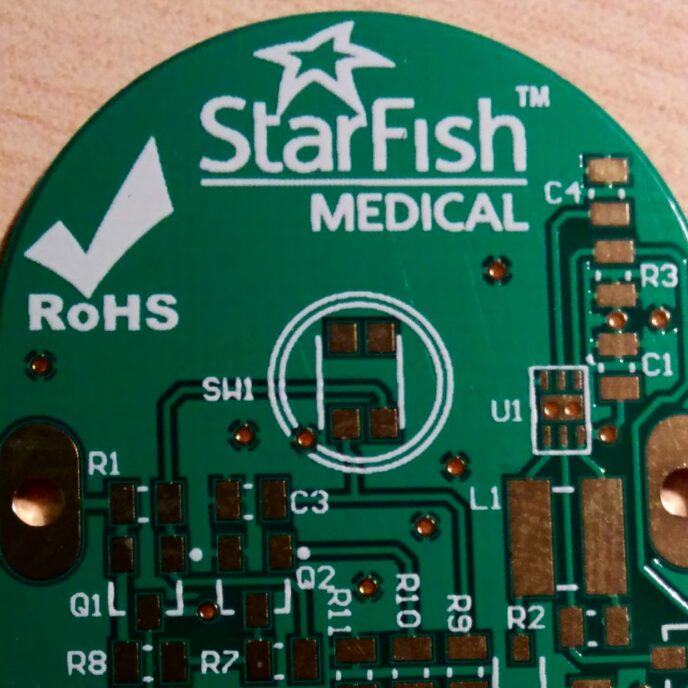
11 Things to avoid to achieve RoHS compliance
RoHS is still a hot topic. Even though it has been around since 2002, RoHS is still changing to include more restrictions and more requirements. Medical devices were exempt for many years, but most are now also included in the RoHS directive. This blog provides background on RoHS compliance and identifies 11 parts and processes to watch out for during the design stage.
RoHS stands for the Restriction of Hazardous Substances. It is a 2002 EU directive that came into legal effect in 2013 in an effort to reduce hazardous waste. It requires that all electronic and electrical equipment (except batteries) sold in the EU do not contain any of the following substances by volume (note there is a large list of exemptions not repeated here):
1. Lead (Pb) – 0.1% or 1000ppm
2. Mercury (Hg) – 0.1% or 1000ppm
3. Cadmium (Cd) – 0.01% or 100ppm
4. Hexavalent chromium (Cr6+) – 0.1% or 1000ppm
5. Polybrominated biphenyls (PBB) – 0.1% or 1000ppm
6. Polybrominated diphenyl ether (PBDE) – 0.1% or 1000ppm
You can find the full EU directive text here, including the inclusions and exemptions. To remove these substances from your medical device, I’ve put together a (non-exhaustive) list of 11 high risk parts and processes:
Leaded solder
This is the biggest one. Make sure to use RoHS compliant or lead free solder in all your electronics and in all your off the shelf parts. If it doesn’t say “Lead Free”, it’s probably not.
PCBs
Some PCBs use lead in the actual board itself. Make sure to ask for RoHS compliant products.
Leaded Paint
It can be tricky to determine if paint it lead free. It is also rapidly becoming less common, but make sure to ask your vendor.
Hot Dipped or Galvanized Zinc Plating
Many galvanized zinc platings are RoHS compliant, but hot dipped galvanization almost always uses lead to improve the fluidity of the dip. Make sure to confirm with your vendor that your galvanized product is lead free.
Cadmium or Lead plating
Obviously RoHS non-compliant, both these processes are losing popularity as people realize how truly toxic they are.
Brass
Brass and bronze often include lead. They have a special allowance under RoHS that permits up to 4% lead content, but many brasses are over that limit. Check with your vendor, especially if the brass is intended to be used from machining. “Lead Free” brass is often considered to be any brass with less than 0.25% lead.
Cast Steel & Aluminum
Sometimes lead is added to aid in the liquid metal’s flow into the cast. Check with your vendor to ensure they are not using cast steel or aluminum over 0.35% or 0.4%, respectively.
Yellow or Type II Zinc Plating
This historically uses hexavalent chromium, number 4 on the list of RoHS controlled chemicals. Some vendors offer a RoHS compliant option, but make sure to check that’s what you’re getting.
PVC
Sometimes lead is added to PVC plastics. Make sure any PVC used in electronic devices is lead free.
Glass
Many glasses used to contain lead, especially those used for lighting purposes (i.e. lights, monitors and windows), and many lights contain mercury (though some have exemptions). Though less common, it is worth inquiring with the vendor.
Flame Rated products
The last two on the list, PBB and PBDE, are flame retardants. They are often mixed into plastics and coatings that are near electronics, to prevent the breakout of electrical fires. Make sure any plastic housings intended for this purpose are RoHS compliant.
There is a lot more to RoHS, and this list is not intended to be a comprehensive document on the subject. There are also numerous other laws governing the use of hazardous substances in the EU and in other nations. It is important to know which laws pertain to which products before you settle on a design or business plan. If you do not currently follow the RoHS (or upcoming REACH) directives, it might be an idea to start right away, or at least familiarize yourself with the subject. It is much more eco-friendly, safer for people who work in waste disposal, and will probably make its way to North America sooner than later.
Nigel Syrotuck is a Project Engineer at StarFish Medical with a specialty in RoHS compliance. He is eager to see how the legal landscape in North America develops over the next 10 years with respect to electronic waste.
Images: StarFish Medical